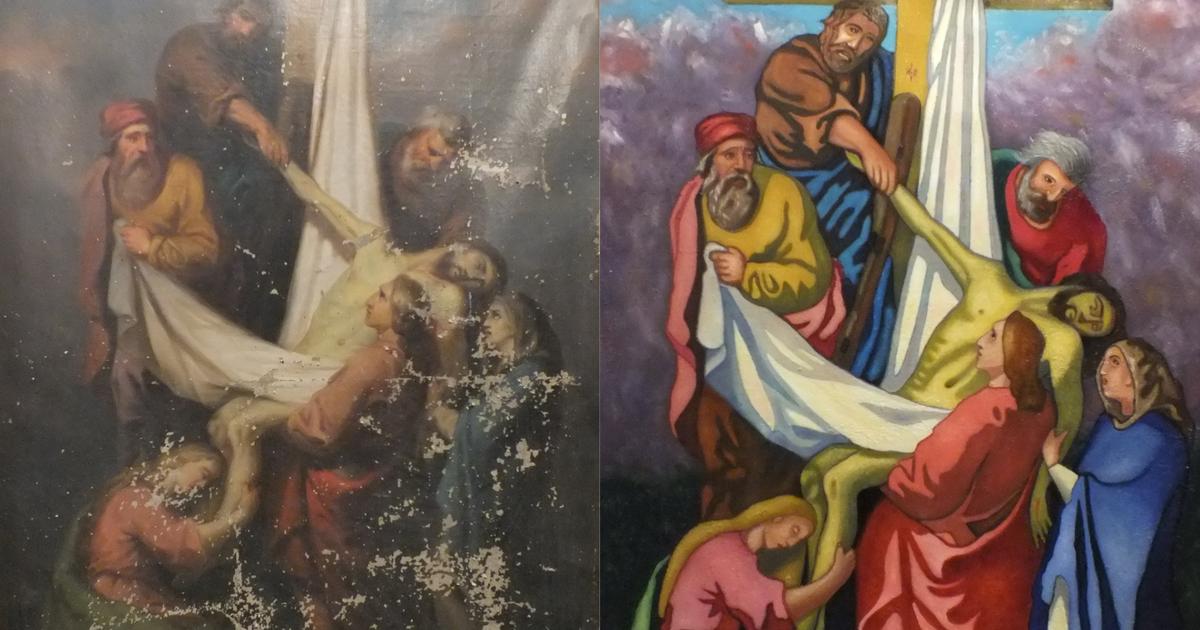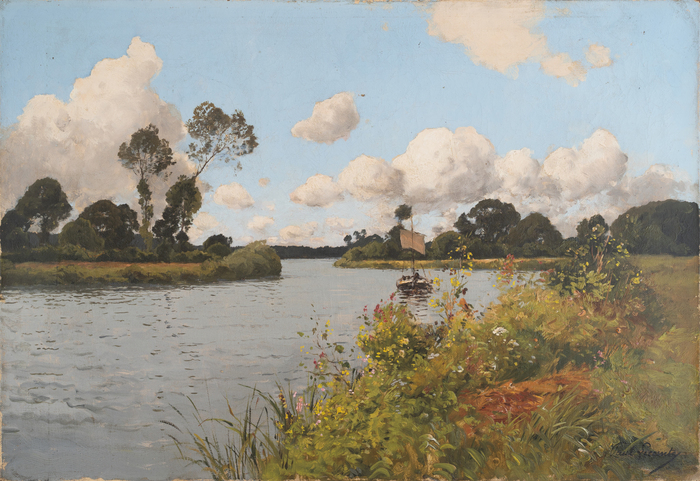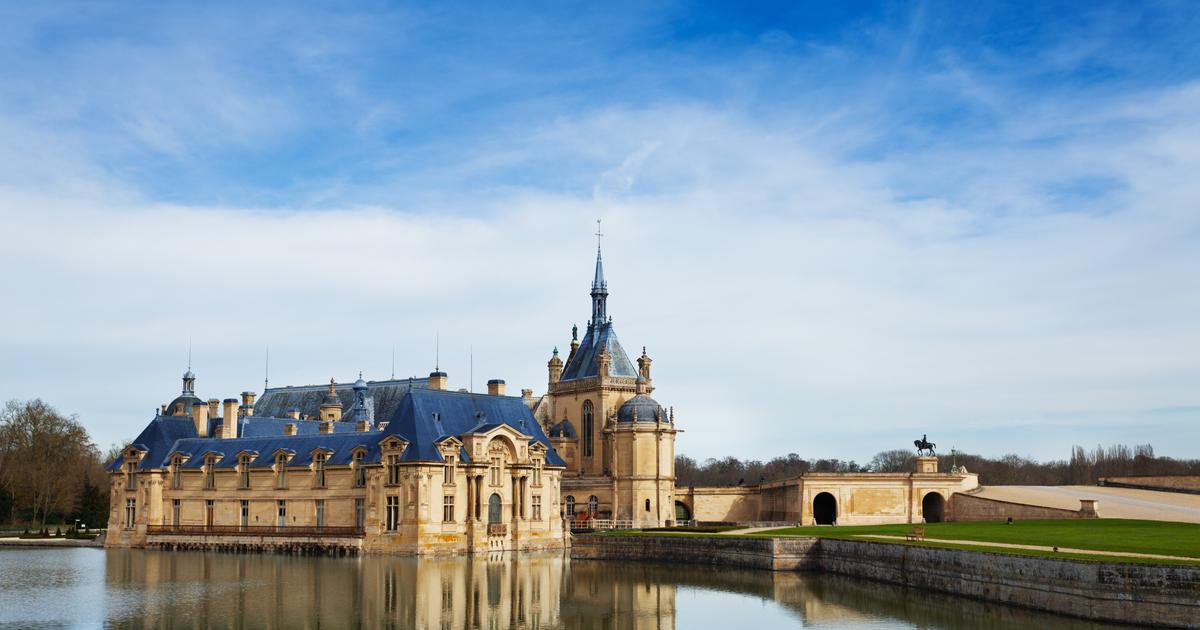The fourteen stations of the ascent of Christ to Calvary were lost in the tower of the Saint-Brice church in Chatonrupt-Sommermont, in Haute-Marne.
Today they come back to life and color in the hands and amateur brushes of a retiree from the town.
The peeling surfaces and faded tones of the canvases give way, painting after painting, to bright colours, firmer forms and the feeling of having “restored” a series of oil paintings that had been left decaying for too long.
Except that the benevolent restorer did not suspect for a moment that his brushstrokes had bruised works of art which, according to first estimates, date from the middle of the 19th century.
To discover
Discover the “Best of the Goncourt Prize” collection
Read alsoThe Jeu de Paume room reopens after eight months of restoration
"It started with a good feeling, but that's how it is, the damage is done"
, told
Le Figaro
Joël Agnus, the mayor of Chatonrupt-Sommermont.
The tone is sorry.
Almost no one had remembered, in this small town nestled between Troyes and Nancy, the presence of these anonymous paintings loaded with Christ in pain.
Discovered in July 2021 during work on the carillon of the church, this set represents the fourteen stations of the Way of the Cross, one of the great motifs of the passion of Christ.
The group of paintings was entrusted as is to the darkness of an unknown corner of the bell tower, perhaps around 1973, without a tarpaulin or any other protection.
The canvases remained crouched in their blind spot, black and smelly, between an uncertain staircase and a bay open to the four winds.
They were courted there, it seems, by squadrons of pigeons and owls.
The paintings remained for several decades in an unsanitary corner of the church of Saint-Brice de Chatonrupt-Sommermont, in Haute-Marne.
Patrick Quercy
When it was rediscovered, the pictorial “treasure” of Chatonrupt-Sommermont had more or less changed into an agglomerate of necrotic canvases.
The mayor remembers.
"We first thought of a pile of rotten wood
," says Joël Agnus.
The frames were worm-eaten, the colors were in poor condition, the canvases were torn and the paint fell along with the twenty centimeters of pigeon droppings as soon as one tried, however slightly, to clean these canvases.
According to the reported testimony of several village elders, these same paintings, exhibited in the 1960s in the nave of the church, were already in an advanced state of decrepitude.
Prolonged isolation has finished chiseling the whole thing.
"
Our first instinct was to throw everything in the trash and that's surely what we would have done if our volunteer hadn't volunteered to restore what could be,”
sums up the mayor.
Read alsoRebound after the sale of Chardin at Artcurial
A restaurant appreciated by local residents
The volunteer in question, Patrick Quercy, was trying his hand at art restoration work for the first time.
An amateur painter, this retired Air Force meteorologist who readily describes himself as a
"free thinker"
set about restoring the canvases to a state of beauty, after sanding down the stretchers, cleaning the surface and opening.
He had procured, for the occasion,
“quality” equipment from
a DIY store in Joinville;
an investment that he charged 40 euros per restoration to the town hall - enough to reimburse the costs incurred.
They were third-rate canvases, made in a hurry, in series, by small local painters working in factories and who sold them by catalog.
Patrick Quercy
The possibility of restoring these works is emerging.
“I saw that they were not signed and that it was only a derisory Stations of the Cross
, willingly specified the volunteer painter at
Le Figaro
.
I researched and saw that it was a genre of painting that settled in France
after 1815
.
They were third-rate canvases, made in a hurry, in series, by small local painters working in factories and who sold them by catalog.
Plus they were scrapped and covered in pigeon droppings.
In short, wrecks of productions with sacred subject, certainly, but of food nature and botched by jobbers, of
Read alsoIraq restores the neo-Babylonian remains of the Ishtar Gate
Unclassified, dying in a lamentable state, the paintings found clutter the small town.
“It's as if we had found them at the recycling center
, argues Patrick Quercy.
The paintings could very well have ended up burned as they were in a state close to destruction.
Another mayor would certainly have done it, by the way.”
Decision is then taken by the town hall, last summer: restore the paintings and
"make them presentable"
in order to put them back in the church.
“
It was my mission.
I complied.
At no time did we consider that it was going to be a problem
”, defends the amateur restorer, without ever mentioning the heritage code or the inalienability of the works.
Death of Christ on the Cross
.
XII station of the Stations of the Cross restored in recent weeks in Haute-Marne.
Patrick Quercy
The great work then begins, in the torpor of the summer of 2021. The first canvas is taken up again with infinite precautions and is gradually covered with new layers of paint, following the outline of the original composition.
Admittedly, the style differs and the colors surprise.
According to the volunteer, between the losses and the colors dulled by time, it had become
“impossible”
to identify certain tones.
"I had to invent in places, for lack of anything better,"
he says.
“I am improving these tables, I am bringing them up to date”,
he also declared last week to our colleagues from France 3. From the first months, the local regional press followed the file.
The Journal of Haute-Marne
relays the discovery of the paintings from July 2021, in an article signed in person by Patrick Quercy, local correspondent for the title.
Then, in September, a report by
La Voix de la Haute-Marne
reported positively on the first restorations.
Read alsoAt the Guimet Museum, the samurai drop the mask
Admiration is then general in the neighborhood.
"The neighbors to whom I showed the decrepit paintings then the same ones restored were amazed, amazed
", recalls Patrick Quercy, who assumes his retouching and remains quite satisfied with his work,
"given the original state of the canvases »
.
“
Obviously the specialists will not agree, but the people themselves had a surprisingly positive reaction: they all found the work magnificent
,” he maintains.
The campaign to restore the fourteen paintings continued throughout the fall and then the winter.
On Monday, only two and a half canvases remained intact.
A set passed under the radar
In March, the Regional Directorate of Cultural Affairs (Drac) of the Grand-Est region finally becomes aware of the discovery and restoration of the paintings.
Eight months later.
The service had not been made aware of the situation, neither by the town hall, nor - even less - by the clergy.
Informed last summer of what the Saint-Brice de Chatonrupt church contained, the young local priest,
“completely overwhelmed”
and in charge of 59 sites, according to the mayor, would have contented himself with pointing out that these goods belonged to the municipality. .
According to the heritage code, the fortuitous discovery of the paintings should have been the subject of a report by the town hall to the prefect, who would then have notified the competent services.
Given their condition, I did not imagine for the slightest moment that we could have been accompanied.
Joel Agnus, Mayor Chatonrupt-Sommermont
Contacted at the end of March by the Drac Grand Est, the mayor of Chatonrupt-Sommermont told
Le Figaro
that he had been asked to stop the restorations in progress.
Since then, his phone has been ringing more often than usual.
Interlocutors evoke to his great surprise a
"massacre"
of the paintings.
Joël Agnus does not hide his dismay in the face of this affair.
“Given their condition, I did not imagine for the slightest moment that we could have been accompanied.
I have no knowledge of catering
,” said the mayor.
He feels that he was not well informed about what he should have done.
“In thirty years that I have been mayor, I have never had to deal with these questions.
“, he evokes, recalling that Chatonrupt-Sommermont, approximately 300 inhabitants, does not contain any listed property or any historical monument.
Read alsoThe rebirth of the Albert-Kahn Museum: opening up to others and to the world
The restorer of the Stations of the Cross, Patrick Quercy, is also surprised by the recent noise raised by his work.
“It's quite common this kind of local restoration by volunteers
, he says.
It happens like that everywhere.
In other municipalities, this same type of object is even frequently stolen to end up at fleas
.
Patrick Quercy learned only very recently that a heritage inventory had taken place in Chatonrupt-Sommermont in 2006. The paintings had then remained under the radar.
Similarly, the various echoes of the discovery published in the local press did not make the referents of the Drac Grand Est react, like the permanence of Joinville, five kilometers from the town.
"
There seems to have been misunderstandings and shortcomings at all levels
,” suggests Joël Agnus.
Contacted by
Le Figaro
, the Drac Grand Est did not wish to speak
“before the end of the electoral reserve period”
.
“We acted in good faith, wishing to preserve what had been fortuitously discovered even if it was not done in the best way,
summarizes the mayor of Chatonrupt-Sommermont.
Anyway, we would not have restored these paintings otherwise, it would have cost us too much on the side of the municipality.
“While the question of the reversibility of the restorations seems to worry the specialists of the Drac, Patrick Quercy nevertheless plans to complete his restoration of the twelfth table.
“Half is already gone, it would be stupid to leave it like that.”
Especially since after the
Ecce homo
in Zaragoza and
the Saint-Georges
of Navarre, France perhaps holds its place in the ballet of risky restorations.








